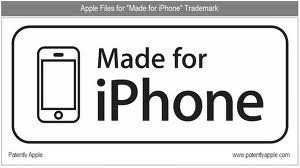This post is a Reader’s Choice selection for 2013.
GN Resound stole the show at the 58th Congress of Hearing Aid Acousticians (EUHA) in Germany last week, with the debut of its “Made for iPhone” MFi hearing aid (scheduled for global release 1st quarter of 2014). According to a press release covered by the Wall Street Journal and internationally on Oct 16, the LiNX(TM) MFi hearing aid introduces a new era:
…for the first time ever, hearing impaired people will be able to stream music and phone calls directly from an Apple iPhone to their hearing aids. The streaming is possible without any stigmatizing, intermediary body worn device.
Let the games begin! Bluetooth streamers are out, iPhones functioning as streamer+Bluetooth+phone are in. This is thanks to Bluetooth 4.0 technology (marketed as Bluetooth Smart, also referred to as Bluetooth Low Energy, BLE) and iOS7, which were covered over the summer on professional and consumer hearing websites.
Sparing techie detail (which will doubtless be covered thoroughly in other HearingHealthMatters posts) these two in combination mark a technological shock to the hearing device Supply Curve shift, shifting it rightward, bringing in new Suppliers, changing Elasticities of Demand and Quantity of Demand.
Two Pronged, Converging Technological Advances
 Bluetooth Low Energy (BLE)/Bluetooth Smart/Bluetooth 4.0. However it’s referenced, past hearing aid technologies did not support it. GN Resound’s Phone Clip+, introduced in January 2013, was the first BLE audio device. It allowed direct connectivity. BLE-enabled hearing aids running on 312 batteries were predicted for later in the year. They’ve appeared on schedule.
Bluetooth Low Energy (BLE)/Bluetooth Smart/Bluetooth 4.0. However it’s referenced, past hearing aid technologies did not support it. GN Resound’s Phone Clip+, introduced in January 2013, was the first BLE audio device. It allowed direct connectivity. BLE-enabled hearing aids running on 312 batteries were predicted for later in the year. They’ve appeared on schedule.
 Apple-designed hearing aid technology integrating with BLE-enabled hearing aids was predicted for this year. Apple’s summer release of its iOS7 operating system opened up the “Made for iPhone” (MFi) future.
Apple-designed hearing aid technology integrating with BLE-enabled hearing aids was predicted for this year. Apple’s summer release of its iOS7 operating system opened up the “Made for iPhone” (MFi) future.
The vision for software based hearing aids in general and MFi hearing aids in particular is two-fold at present:
1) Seamless connectivity with smartphones, eliminating the need for a streaming device. LiNX(TM) does this.
2) Remote adjustment of hearing aid settings. LiNX(TM) will probably do this shortly via users’ iPhones. Meanwhile, an Indian hearing technology firm, Jakoti bvba, released ListenApp last week, which allows remote programming by hearing healthcare professions. The device is described as a “standalone software-based” combination music player and hearing aid, “integrated into an off-the-shelf consumer smartphone and using off-the-shelf headphones with microphone.”
Two-Pronged Economic Curve Shifts
Technological advances shift Supply Curves, which affect Demand Curves and ultimately change Equilibrium. LiNX(TM) and other premium MFi hearing aids coming in the short term will come with higher price tags for cutting edge technology. Those will be sold in professional settings, purchased by Early Adopters in limited quantity–at least at first.
On the other side of the Demand Curve, ListenApp and other lower-tech software phone integrated approaches (e.g., using headphones and mics) will be offered in large quantity as low price direct-to-consumer items disseminated in “fast developing countries.”
These ARE exciting times to be a Hearing Economist. I’m not 100% sure I can say the same for being an Audiologist. But, I’m 100% sure it’s Apple’s time. Amazing technological innovations in hearing are coming at us in a deluge, judging from the patent applications Apple has filed in 2013 alone.
The list of Apple visions is too long and too rich to stick as the last 1/2 of a too-long post, as I’d originally intended. Stay tuned for an Alice in Wonderland hearing device tour of Amazing Apple Applications.
iOS7, MFi, iPhone 5s, 5c, 4s, and 4 are trademarks of Apple, Inc.
Bluetooth is a registered trademark of Bluetooth SIG. (edit)






